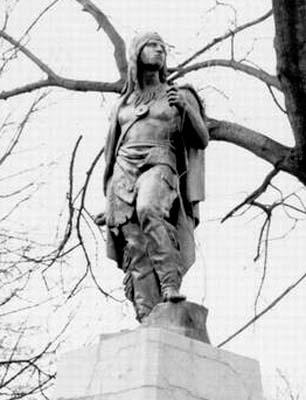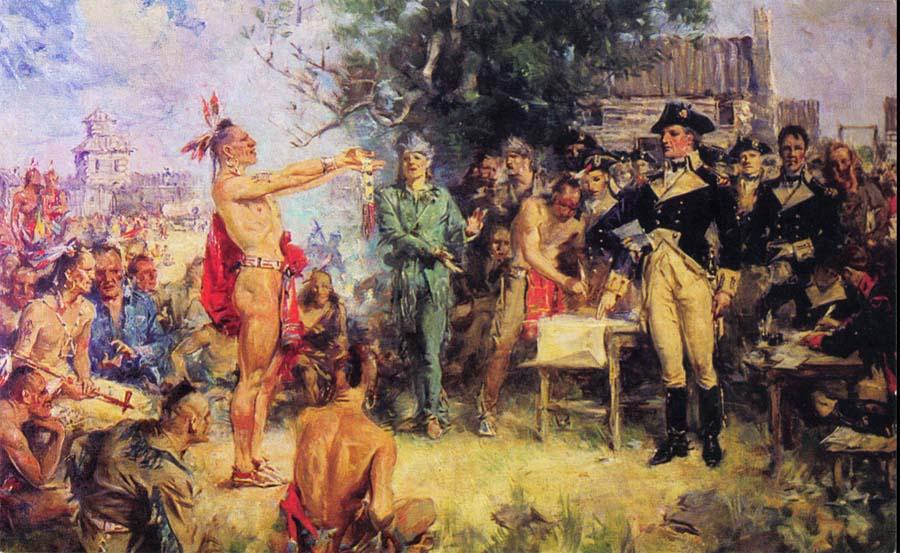
Kageshquanohel or Captain Pipe’s Dilemma
Ohio Native Americans and the American Revolution

While independence from Britain generally expanded liberty and empowerment for most white Americans, its impact on Native Americans was far less favorable. Most faced tough decisions about how to navigate war between whites. While some Native American groups sided with the new United States, most western tribes, including the Shawnee, sided with the British. Others sought to stay out of it entirely, including the Lenape (Delaware) inhabitants of the Upper Ohio River Valley.
The Dilemma of Kageshquanohel
One of the Lenape leaders, Kageshquanohel, or “Captain Pipe” (Hopocan), appealed to American officials to respect neutrality and his peoples’ land claims. Despite this desire, members of his own family were killed by American militia. Receiving no promise that justice would be served or property respected, Captain Pipe removed his people further west and reluctantly allied with the British. After delivering several American prisoners and at least one scalp to Fort Detroit in 1781, he provided his British hosts a powerful expression of his frustration with the circumstances that had left his people trapped. Pipe questioned British motives and their desire to be called “Father.” He lamented Europeans’ continued resort to violence, asked that mercy be shown to the American prisoners he delivered, and predicted that whites would again exclude Native Americans in their peace, leaving them to deal with the negative consequences of war.
Captain Pipe’s understandably angry speech offers a powerful reminder of the challenges individuals and groups of Native Americans confronted as they navigated the shrinking space between warring European Empires.
“You both have raised the quarrel within yourselves; and by right, you ought to fight it out Yourselves and not compel Your Children, the Indians, to expose themselves to Danger for Your sake!....”
“...Father! You say you love your children the Indians! This You have often told them; and indeed it is your interest to say so to them, in order to have them at your service! But Father! who of us can believe, that you could love a People differing in Colour to that of Yours, more than those (of such) who have a white Skin like unto that of Yours!”

Pipe’s Prediction Proved Prophetic
Neither the British nor the Americans considered Native American claims in the 1783 peace treaty ending the American Revolution. After the war, Captain Pipe worked with the Continental Congress to protect his people, but his peoples’ plight continued as the newly independent United States looked to expand settlements into the “Ohio Country,” hoping land sales there would help pay off the nation’s wartime debt. Founders of the Ohio Company of Associates who settled Marietta and founded Ohio University hoped for peace with Native American peoples. Yet a combination of their own ethnocentrism and the negative impact U.S. land seizures had on Native American settlements generated conflict, which by the 1790s culminated in an extended war as the Lenape people joined other western nations to resist U.S. expansion. Eventual defeat compelled a treaty that removed Native American peoples from most of Ohio. The exact fate of Captain Pipe remains debated, but he was thought to have resettled his people in Indiana.
